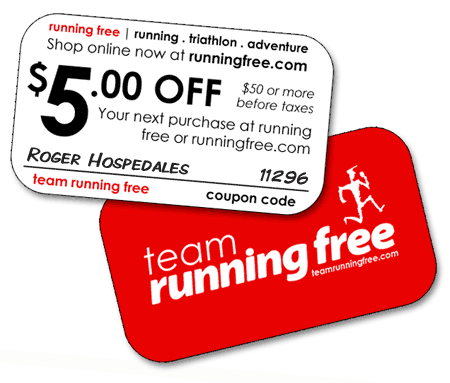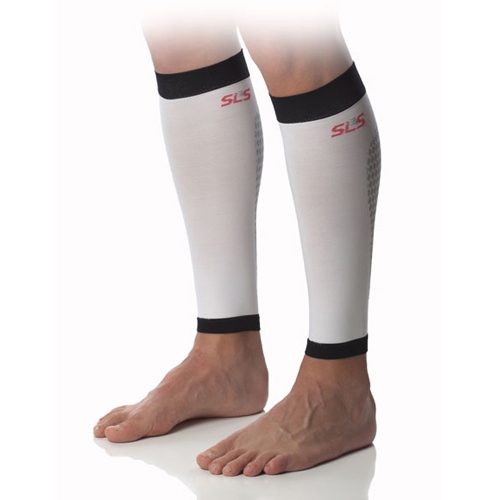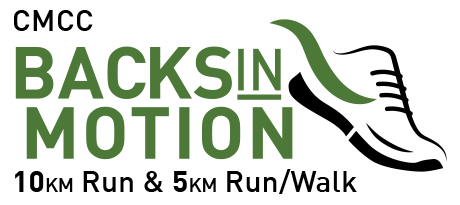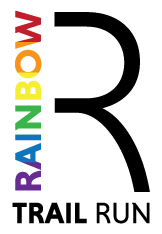After being made the Running Free catalogue poster boy for the SLS3 Compression Sleeves – thanks Jeremy, I figured I better write about them. And no, I did not get a free pair for writing this or appearing in the catalogue. As with all my reviews, it is just my honest assessment of the product.
Proper and speedy recovery from training and racing is of utmost importance to me. It is quite simple. If I am not recovered from my workouts, how can I expect to perform my next workout properly and gain all of the benefits of that workout?
I am always looking for extra assistance wherever I can get it, and utilizing compression gear to improve recovery is a no brainer for me. Heck, I have to wear, socks, bottoms and a top anyway, right? Plus, it works!
I’ve tried almost every brand of compressions sleeves out there, and while I’d love to see them make the sleeves in a colour other than white (black would be great), the SLS3 brand is my clear favourite. By the way, I am a fan of their socks too – they have them in black.
In addition to using them post race, I also make use of them for racing. Many do not deem them as beneficial during a race but I figure it can’t hurt. My empirical view is that it reduces my muscle soreness post-race, and if helps me go faster in the process then all the better.
Why sleeves and not socks? I love Fox River socks, so the combining the two works perfectly for me. Plus, you can swim with the sleeves not with the socks. I do tend to save my SLS3 sleeves for my longer or ‘A’ races so if you see me in another brand at a shorter race that is the reason. Here is why I prefer the SLS3 sleeves.
They have more compression (26-28 mmHg) than most of the other brands but they still remain very comfortable. I put them on at home/hotel, drive to the race site, swim, bike, and run in them and leave them on after the race to help with recovery. At my last Ironman race, the total time in them was over 15 hrs (pre, during, and post race) and I did not notice them at all.
They are hydrophobic. I wear them during the swim (under the wetsuit – to save time in T1), and they dry off rapidly during the bike. However, in hot, humid conditions, the material actually has a cooling effect. In close to 30-degree heat, I was totally comfortable.
Conversely, they keep me warm by shielding the wind during the early portions of an Ironman ride (which tends to be slightly chilly). There is also 50+ UV protection.
Finally, here is another piece of evidence, and goes to show how it increases blood flow. Not too long ago I was playing pick-up hockey and took a puck off the shin. The result was a sizeable bruise and hump of swelling. Once I got home, I put on my SLS3 compression sleeves and by the next day the swelling practically disappeared. I continued wearing them for a few days later and the discolouration was gone.
I was sold on the benefits of compression gear when I utilized them to recover from my Achilles surgery, and that confidence has only built with this past season. As a guy who often races twice in a weekend, or on occasion twice in one day, the use of compression sleeves and other compression gear is must and if you are serious about recovery it should be for you too.
If you do decide to buy the SLS3 Sleeves or Sox at Running Free, make sure to use coupon code 11296 to save $5 right on the spot.
Below is more information from SLS3 and a great explanation of how compression apparel works:SLS3 Compression Sox average around 26-28mmHg. This is considered firm compression that helps with severe swelling, reversible lymphoedema, moderate to severe fatigue and cramps, and severe vein insufficiency. Above this there is yet more compression to be had BUT it is for medical indication such as irreversible lymphoedema and elephantiasis.
Scientific tests have shown that the SLS3 Compression Sport Sox boost bloodflow about 34%. This increases oxygen delivery to the working muscles to enhance their performance. The circulation improvements also help the body to eliminate metabolic wastes like lactic acid. The combination of these effects allows you to work harder and longer.
The SLS3 Compression Sox also offer significant support to the Achilles tendon, tibia, calf and ankle. This boosts the ability to reduce common ankle and foot injuries.
The supportive effect and the compression of the SLS3 Compression Sox reduce the muscle vibration drastically, which leads to less damage of the soft tissue and less sore muscles.
How Compression Apparel Works
Imagine this: Your leg is a two lane highway with little to medium traffic at rest. Now you’re racing or training hard which equals rush hour. The result: traffic jams, delays in arrival and return. Major lactate acid build up resembles new construction sites….it will only get worse from here.
The SLS3® Compression Sox mean a widening of your two lane highway into a four lane freeway. Workloads of high intensity training, long durations and racing are now able to move without being held up. Traffic aka oxygenated blood gets all the way into the foot, lactate acid can be transported out at the same time without major delays.
As a result, you will be able to work longer, harder, faster and get back to it earlier!























Nice article Roger…
I agree about the sleeves.. I’d rather wear my own socks also..
For the achilles recovery did you use the sleeve or socks? (Not sure the sleeve reaches far enough or is the calf support enough to take stress off the tendon?)
I used both. But I do feel that you get better Achilles coverage/support when you wear the socks. I tend to use the sleeves for racing/training, and the socks for important/long sessions and for recovery. If you have both at your disposal then you can switch off between the two depending on your mood/needs.